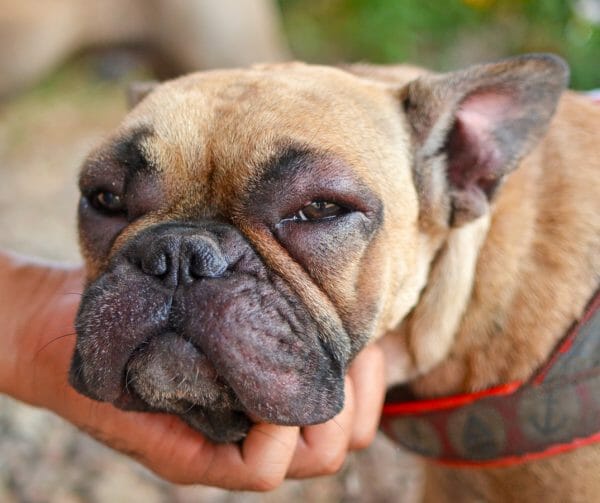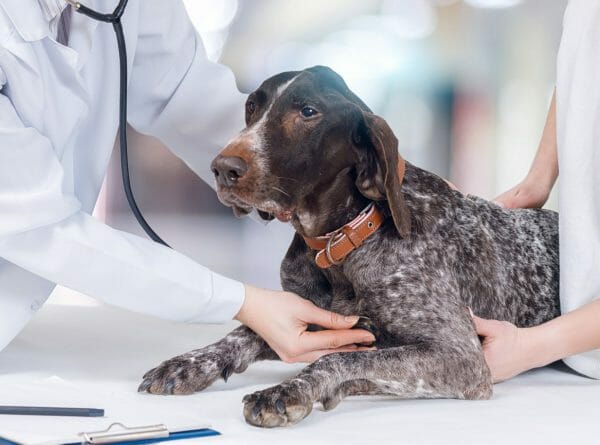What is Benadryl?
One of the most well-known over-the-counter medicines available at the drug store is diphenhydramine, which is more commonly known as Benadryl. It is an antihistamine that has the rare capability of crossing the blood-brain barrier. In layman’s terms, this makes Benadryl for dogs and humans extremely effective, hence its popularity as a go-to medicine when allergies, swelling, or itchiness comes about.
Can You Give Dogs Benadryl?
As each new allergy season rolls around or in the case of a sudden allergic reaction, many dog owners may feel compelled to administer Benadryl for dogs for the sake of convenience when dealing with these types of issues. Although many may see this as an “easy fix” because this medication has been found to work in dogs similar to how it does in humans, this is very much advised against.
Biological factors such as age and weight—as well as current medical problems and genetic predispositions—must be taken into consideration by a vet when administering medications. The same is true for the administration of Benadryl.

When to Use Benadryl or Your Veterinarian
A dog should not be taking Benadryl for dog allergies or any other type of situation until a vet verifies that it is safe for the dog to do so. Because this medication can negatively affect the dog if certain conditions are present, it is safest for the pup to see a vet first.
A vet will also be able to assign a proper dosage of the medication to the dog based on age and weight. For example, the dosage of Benadryl for puppies may be an entirely different dosage than it would be for older dogs. In cases of elderly dogs, some may be required to get a blood work-up in addition to a regular examination.
After the dog has been approved by a vet to receive Benadryl and proper dosage has been determined, the dog owner can freely administer it at home when it is needed.
Benadryl Uses for Dogs
Because of Benadryl’s anti-inflammatory properties and its ability counteract something as serious as anaphylactic shock, it has the potential to go as far as saving the life of a dog.
Although dog bee stings or tick and flea bites are most likely not enough to kill a dog alone, they may trigger an allergic reaction that can prove to be fatal. Even more, in a dog, snake bites are 25 times more fatal for them than it is for human beings. Benadryl has often been found to effective in these situations—offsetting the adverse reaction and saving the dog’s life.

Below are the most commonly noted uses in Benadryl for dogs:
- Allergic reactions due to the change of seasons, environment, food eaten, or bites
- Hives
- Inflammation
- Itchiness due to insect bites
- Nausea or motion sickness (contains drowsiness-inducing ingredients)
- Coughing and sneezing
- Extreme anxiety or nervousness
Although Benadryl is certainly used more than anything to alleviate various allergic reactions, it also can be used in numerous other ways. In dog itching, this medication can be especially effective. Again, it should be reiterated here that a vet must be seen before Benadryl is administered.
If a dog is observed to be experiencing severe swelling and trouble breathing as a result of an adverse reaction, Benadryl use should be forfeited, and a trip to the animal hospital should be made immediately.
How Much Benadryl Can I Give My Dog?
When it comes to a dog Benadryl dosage chart to determine the proper dosage for a dog, the numbers are pretty standard across the board. However, to truly ensure the safety of a dog, a vet must understand the dog’s health history before a safe dosage is prescribed.
It is not worth using Benadryl for dogs without a vet’s consent to only find out the medication causes a worse situation than existed before. Inconvenient though it may be, it is the safety of the dog that must be considered.
Generally, however, for every pound a dog weighs, 1 mg (milligram) of Benadryl can be administered. For example, a dog weighing 40 pounds can take up to 40 mg of the medication every 8 to 12 hours, 2 to 3 times daily.
Benadryl is safest when given in the form of a pill. This is because the liquid form of the medication can contain xylitol, which is fatal for dogs. Again, all of this information is generalized to dogs in general. For specific dogs, the dosage number, how many times it can be administered, and any other information may look very different. This is why it is crucial to consult a vet before giving this medication freely to canines.

Overdose
It takes about 30 minutes for the Benadryl to take effect in a dog. Within this period of time, a dog should always be watched closely to make sure it is processing the medication without any problems. If an overdose is suspected, some of the following symptoms may appear:
- Dilated pupils
- Racing heart rate
- Constipation
- Agitation and/or nervousness
If these signs are seen after giving Benadryl, the dog should be rushed to the vet or animal hospital.
Potential Side Effects of Benadryl
As with every medication, there are potential side effects when giving a dog Benadryl. Although some of these are commonplace, some are uncommon, which means a dog should be monitored closely to ensure the side effects do not become progressively worse. Potential side effects of Benadryl include:
- Sleepiness
- Dryness of the mouth
- Decrease in appetite
- Fast heart rate
- Vomiting or nausea
- Diarrhea
- Retention of urine
If these symptoms arise when giving dogs Benadryl and begin to worsen, the vet should be made aware promptly.

When to Avoid Benadryl for Dogs
Some preexistent medical issues in dogs are known to be negatively affected by the consumption of Benadryl. For some dogs, this medicine must be avoided completely. Based on the dog’s medical history, a vet will be able to determine if the dog is able to safely receive Benadryl
If the following conditions are present in a dog, special care should be taken with Benadryl:
- Pregnant and/or nursing
- Abnormal blood pressure
- Disorders involving seizures
- Lung disease
- Heart disease
- Hyperthyroidism
These are only some of the conditions that should be thoroughly evaluated by a vet before Benadryl is administered to a dog. As stated before, all dog owners should get clearance from the vet before administering Benadryl to their dogs.



